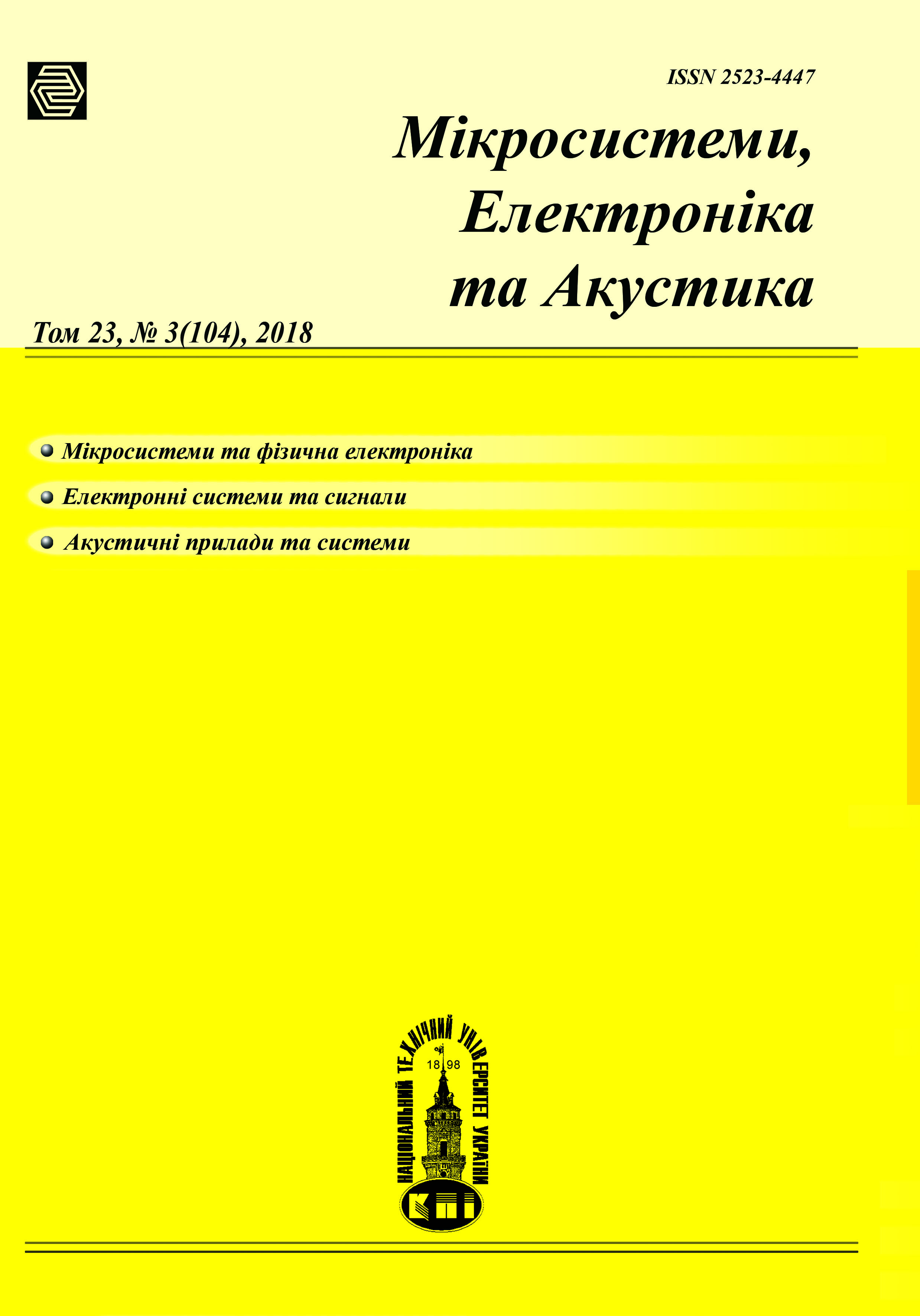Експериментальне дослідження сфокусованої ультразвукової системи для диференційної діагностики слуху людини
Основний зміст сторінки статті
Анотація
В даній роботі проведено аналіз актуальності та новизни застосування п’єзоперетворювачів для неінвазивної діагностики завитки внутрішнього вуха людини за допомогою сфокусованого ультразвуку. Розраховано акустичні параметри п’єзоперетворювача з лінзою ввігнутої форми. Наведено теорію, розрахунок та конструкцію вимірювальних засобів: високочастотного ватметра для вимірювання споживаної п’єзоперетворювачем електричної потужності; радіометра для вимірювання акустичної потужності сфокусованих ультразвукових пучків. За їх допомогою проведено детальне експериментальне дослідження акустичної системи, а саме визначено параметри її акустичного поля та коефіцієнт корисної дії. Зроблено висновок про доцільність використання даного типу електроакустичного перетворювача для диференційної діагностики слуху людини.
Бібл. 10, рис. 6, табл. 2.
Блок інформації про статтю

Ця робота ліцензується відповідно до Creative Commons Attribution 4.0 International License.
Автори, які публікуються у цьому журналі, погоджуються з наступними умовами:- Автори залишають за собою право на авторство своєї роботи та передають журналу право першої публікації цієї роботи на умовах ліцензії Creative Commons Attribution License, котра дозволяє іншим особам вільно розповсюджувати опубліковану роботу з обов'язковим посиланням на авторів оригінальної роботи та першу публікацію роботи у цьому журналі.
- Автори мають право укладати самостійні додаткові угоди щодо неексклюзивного розповсюдження роботи у тому вигляді, в якому вона була опублікована цим журналом (наприклад, розміщувати роботу в електронному сховищі установи або публікувати у складі монографії), за умови збереження посилання на першу публікацію роботи у цьому журналі.
- Політика журналу дозволяє і заохочує розміщення авторами в мережі Інтернет (наприклад, у сховищах установ або на особистих веб-сайтах) рукопису роботи, як до подання цього рукопису до редакції, так і під час його редакційного опрацювання, оскільки це сприяє виникненню продуктивної наукової дискусії та позитивно позначається на оперативності та динаміці цитування опублікованої роботи (див. The Effect of Open Access).
Посилання
Y. G. E.E. Godik, «Functional imaging of the human body,» IEEE Engineering in medicine and biology, т. 10, № 4, pp. 21-29, 1991.
S.A.Naida, «Acoustic thermometry of liquid objects using piezoelectric sensors of megahertz range,» Technical diagnostics and non-destructive testing, т. 3, pp. 41-48, 2002.
S.А. Naida, D.A. Lyashko, «Features of Application of the Acoustic Focusing Lenses in Passive Acoustothermometry of Biological Objects,» Electronics and communications, № 2, pp. 46-52, 2015, DOI: 10.20535/2312-1807.2015.20.2.42497..
S.A. Naida, «Formula serednoho vukha liudyny v normi. Vidbyvannia zvuku vid barabannoi peretynky,» Akustychnyi visnyk, № 3, pp. 46-51, 2002.
L. Gavrilov, «Focused ultrasound stimulation of the peripheral nervous system: physical basis and practical applications (review),» International Journal of Modern Physics: Advances in Theory and Applications, т. 1, № 1, pp. 45-118, 2016.
Didkovskiy V.S., Naida S.A., «Piezoelectric converters of medical ultrasound scanners,» Kyiv, 2000.
Kanevskiy I.N., «Fokusirovanie zvukovyih i ultrazvukovyih voln,» Moskva, 1977.
Domarkas V.Y., Kazhis R.I., «Funktsii peredachi pezopreobrazovateley v vide plastinok s uchetom mehanicheskih i elektricheskih nagruzok,» Lit. SSR, 1971.
Baskakov S.I., «Radiotehnicheskie tsepi i signalyi,» Moskva, 2005.
Chivers R.C., Zell K., Peak J.C.F., Fielding S.H., «The tethered float ultrasonic radiometr,» Acustica, т. 79, № 2, pp. 170-174, 1993.





